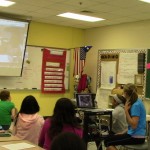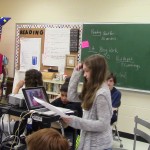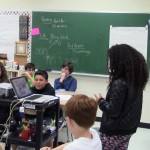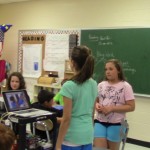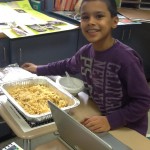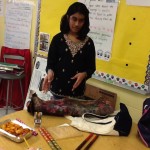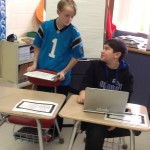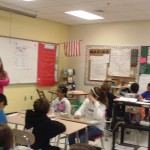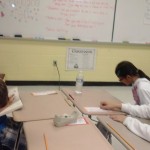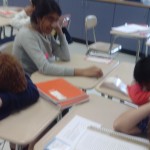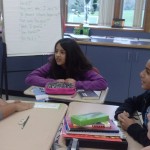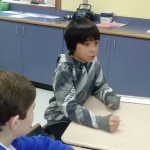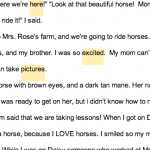To celebrate Women’s History month (March), some of the students participated in an essay contest sponsored by one of our State Senators. The students had to respond to the following: “Important Women in Connecticut’s History and How Their Contributions to the State and Nation Affect Me”. The students picked a woman important to Connecticut- some of the women picked were: Suzanne Collins, Helen Keller, Lindsey Jacobellis, Dorothy Hamill, Dr. Pat Bragdon and Mary Burke. Then the students responded to the prompt.
Below are the essays from the winners for our school: Michelle-first place and Sarah- runner-up.
***********************************************************************************
Michelle
Notable Women of Connecticut Essay
Remember when it seemed like it was impossible for people who needed a hand to get back up on their feet, or to get an extended hand to pull them up. How about when one person asked for help and everybody turned the other cheek. Well, in 1991, I CAN inc was founded by Dr. Pat Bragdon and Mary Burke. Since 1991 till now at 2015, both Dr.Pat Bragdon and Mary Burke are still helping those in Connecticut who need a hand and a shoulder to lie on at Ann’s Place. At Ann’s Place volunteers are giving their hand to those who fell down.
At Ann’s Place Dr. Pat Bragdon and Mary Burke provide professional counseling, support groups, wellness activities and more at no charge. This helps the community in a big way to comfort those who can’t pay, but are getting the support and guidance that they need. With all the help from Ann’s Place, more people are understanding the need to lend a hand to those who need it. Ann’s Place serves over 800 people, both those with cancer as well as their family members, people of all ages, and with all types of cancer from across Connecticut and Hudson Valley New York. Can you imagine how many people Ann’s place have helped? These are people that live in the area, your neighbors, colleagues and friends, and they become not only part of our community, but when you get to know a person like at Ann’s place, they start to become part of you.
The people of Connecticut are being supported by people and volunteers at Ann’s Place with the determination of helping others. Many people think that winning a race or beating someone at a game is what a winner is. But at the end of the day when you look back and see how many people you’ve lent a hand to, or even made them smile, that makes you a true winner. At Ann’s Place they are doing that everyday and that truly influences me to want to help others more by donating money to charities and fundraisers, volunteering for community work when I have the time, and the greatest of them all, to listen to those who are in need of someone to hear their story so that anyone can see what they are going through. I want to be making the difference of helping and inspiring others so that little by little we can all make the world a better place.
***********************************************************************************
Sarah
Woman’s History Essay
Helen Keller was 19 months old when her world stopped. In 1884 the young infant dropped to the ground and never heard or saw again. What she was diagnosed with scarlet fever, or commonly known back then as brain fever. Imagine, never being able to see your own mother, listening to the waves of the beach, or even looking at your own reflection. Despite this, Helen was a tremendously quick learner and wouldn’t let her disability get in the way of achieving her dream of being a normal girl. As a result, at the age of 7, Helen had a new found understanding of the world around her with help from her teacher Anne Sullivan. Helen was able to learn 30 words in one single evening. Automatically, Anne knew Helen would be someone special one day, disability or no disability. By the time she was a teenager in 1900, Helen became an undergraduate at Radcliffe College and by 1903 the young disabled women had published her first book “The Story Of My Life” and was a true inspiration to disabled men and women around the world.
Helen Keller inspires me on tremendous levels. Her determination, and persistence pushes be to the best I can each day, and the way she choses to use her disability to help others puts me in awe. That is why Helen Keller is an inspiration to me. Keller worked hard each day with Anne Sullivan to learn as much as a little girl possibly could. She had big and what many thought were impossible dreams, Helen experienced many haters and many disbelievers, but the young girl had a goal in mind and she was determined to meet it. Helen no longer wanted to be mute, she wanted to say what was on her mind. She published two books in the course of five years, one specifically on how she feels about the world. But, besides her great accomplishments, besides trying to please herself and do good for herself she still chose to help others. Keller dedicated most of her to being an active supporter on behalf of the disabled. She received many awards for her dedication and care such as the Presidential Medal of Freedom in 1964, she was the first women to receive an honorary Doctorate from Harvard, and named one of the 100 most influential people of the 20th Century by Time Magazine according to cwhf.org. Helen has made history not because of famous parents, or from being a sports superstar, but rather her caring for others even when she might have needed it more herself. Not only that but she defied the odds learning to talk and write while being blind and deaf. She was not only an inspiration to all the disabled in America, but myself as well. She has inspired me to be a scientist with medicines, that will hopefully find a cure to help someone just as Helen Keller did.
**************************************************************************************************************************
I am so proud of these girls’ achievement!



